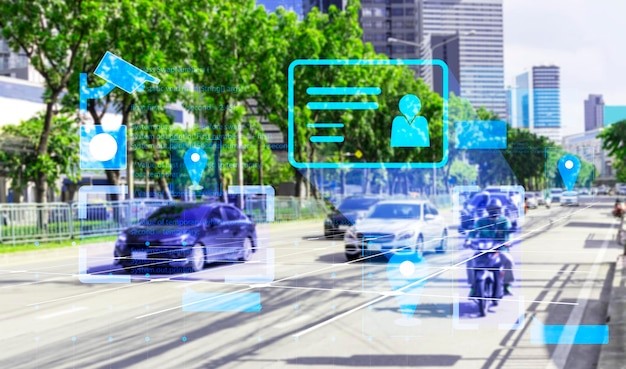
The output of your AI models is as good as the data you use. To promise precise data, data annotation tools and technologies can enrich your data for training machine learning models.
However, choosing the most suitable tool for you is not an easy decision. Data annotation technologies have developed quickly and tools for data annotation have changed so often.
How do you get a glimpse of data annotation tools and technological development? Don't worry about it! This comprehensive guide will update the information for you.
Simply put, data annotation is the process of enriching raw data with contextual information, so machines can understand and interpret it.
This process seems like you are teaching a child to recognize objects by speaking out loud their names. Indeed, data annotation is like what those early lessons do for human cognition.
It must be noted that data collection and annotation are two basic steps for training AI models. Needless to say, data annotation lies as a solid foundation for the next step.
It transforms the unstructured data into a structured form. With this organized format, machine learning algorithms can analyze and learn from it.
Without accurate data annotation, AI systems would encounter trouble when making sense of the world. Is it like a child trying to understand a picture book without words?
This way, data annotation gives AI systems "books" with detailed and organized information to learn from.
Now that you have understood the importance of data annotation in training an AI model. It's time to introduce some different types of data annotation.

Image annotation labels and identifies visual elements within digital images.
Video annotation identifies objects within frames and tracks their movement and changes.
Focusing on adding metadata to written content, text annotation enables AI models to analyze the emotion underlying a text (sentiment analysis) and tag specific entities (named entity recognition).
Audio annotation can transcript speech to text and classify different sounds. It is important for developing voice recognition systems, music recommendation algorithms, and environmental monitoring applications.
LiDAR (Light Detection and Ranging) annotation deals with data captured by LiDAR sensors. LiDAR annotation tasks may include point cloud segmentation, classification of objects within the point cloud, and the tracking of objects across multiple frames.
A data annotation tool facilitates labeling and categorizing data. These tools can handle a variety of data types, and provide interfaces as well as functionalities to interact with data.
As the content above, each type of data annotation requires highly specific technology and tools to ensure data accuracy.
Therefore, you should also understand that data annotation tools are not one-size-fits-all. Each tool is tailored to the nuances of different data types and use cases. For example, image annotation tools like Labelbox or SuperAnnotate offer more suitable object detection and image segmentation than other data annotation tools.
After getting an idea of how data annotation tools work, here are some famous commercial and open-source data annotation tools for you.
From healthcare to retail, commercial data annotation tools are purpose-built to cater to the diverse needs of various industries. These tools are supported by professional teams. They often come with user-friendly interfaces, customizable workflows, and quality control mechanisms.
1. Labellerr
Labellerr offers fast and reliable labeling for businesses. Its customizable platform and flexible pricing structures make it versatile for all-sized projects.
2. Labelbox
Labelbox is a data-centric AI platform that provides various annotation tasks. From image and video annotation to audio labeling, it features efficient labeling through automation and custom workflows.
3. SuperAnnotate
SuperAnnotate is known for handling a large range of data types. Its tailored annotation tools work for specific tasks and provide automation features for the labeling process.
4. Appen
Appen supports a variety of data types and offers services to improve AI accuracy by ensuring high-quality labeled data.
5. V7
Recognized for its speed and accuracy in data annotation for AI, V7 provides quick creation of polygon masks and tools for data organization and model management.
6. Amazon SageMaker Ground Truth
As an Amazon web service, SageMaker Ground Truth integrates with other Amazon offerings. Its data labeling embraces automation capabilities learning from human annotators to work more efficiently.
If you have little budget, there are some free data annotation tools for you to consider.
For open-source data annotation tools, one of the outstanding benefits, undoubtedly, is cost-effective.
Open-source data annotation tools often allow users to modify the source code to suit their needs. This flexibility is significant for those with unique requirements and limited budgets.
Also, open-source tools support a non-commercial community, in which users can all contribute to improvements.
1. CVAT (Computer Vision Annotation Tool)
CVAT is so versatile that can manage a wide range of annotation types. It also offers auto-annotation for computer vision tasks.
2. LabelImg
Labellmg is a graphical image annotation tool. It allows the creation of bounding boxes and segmentation masks. Its user-friendly and straightforward interface makes it popular among beginners.
3. VGG Image Annotator (VIA)
VIA is a simple tool for image annotation. It can annotate various shapes, such as points, rectangles, and polygons.
4. LabelMe
LabelMe is an online annotation tool that provides a web interface for image labeling. It can solve many detailed annotations and offer a range of options.
Open-source tools are excellent in many cases. However, they may lack some advanced features to meet specific needs. Sometimes they require more expertise to enhance technology and maintain the quality.
With so many data annotation tools available, selecting the right one reveals your understanding of your needs and the tools.
1. Dataset Management
The first step in data annotation is managing your dataset effectively. The tool should support your dataset's volume and format so that you can sort, filter, and merge datasets. It should also provide secure storage and handle data clones.
2. Annotation Methods
Be it image, video, text, or audio, the tool you choose should offer the annotation method suitable for your data. The tool should also be easy to use so that both technical and non-technical individuals can annotate without long-term training.
3. Data Quality Control
Data quality control should be a built-in feature when considering data annotation tools. Tools with validation checks, consensus mechanisms, and version control can enhance the quality of annotated data.
4. Workforce Management
Tools are there to free humans. No matter you are working with an in-house team or outsourcing to other annotators, the tool should streamline workforce management. This involves task assignments, progress tracking, productivity analytics, etc.
5. Security
Security is non-negotiable. The tool you choose must comply with data protection regulations as well as industry standards. If your project involves sensitive data, you must look for tools that provide additional security.
6. Integrated Labeling Services
Some data annotation tools offer integrated labeling services, and they provide an end-to-end solution for your data annotation needs. For smaller-scale companies, this can be a method to reduce labor.
In this ever-evolving world, data annotation technology is growing with a rapid seed. During the development, it faces many challenges and also reveals some emerging trends.
1. Extensive Datasets
As the demand for sophisticated AI systems increases, so does the need for extensive datasets. From face datasets to speech recognition datasets, datasets stand as a tricky task due to the requirement of large volumes.
2. Consistency
Data annotation is often subjective, especially for those integrated with human-in-the-loop (HITL) machine learning. Even under the same guidelines, different annotators may have varying interpretations of the same image or text. So, ensuring consistency across large volumes of data needs stringent quality control measures.
3. High Quality
Finding a balance between cost and quality requires strategic investment. High-quality data annotation could be labor-intensive, while automated annotation tools may not always keep a high level of accuracy.
1. Automated Annotation
The industry is seeing a shift towards semi-automated and automated annotation tools. They can pre-label data, suggest annotations, and learn from the corrections from human annotators. This can improve efficiency and reduce human error.
2. Integration with AI and Machine Learning Pipelines
Integrated with AI and machine learning pipelines, data annotation tools allow for a more dynamic workflow. Annotated data can be fed into model training, and models can be improved on the basis of the annotations.
3. Human-in-the-Loop Approaches
Although automated annotation is a trend, the HITL approach remains an important place. HITL systems take the strengths of both humans and machines, using AI to annotate at the initial step and humans to review them. This approach maintains reliable annotations and more accurate datasets.
Data annotation technology has been successfully implemented in the real world.
1. Autonomous Vehicles
Companies like Tesla and Waymo have utilized data annotation to train their self-driving cars. By learning vast autonomous driving data from various environments, their vehicles can recognize pedestrians, traffic signs, and other vehicles with high accuracy.
2. Natural Language Processing (NLP)
Data annotation has been instrumental in developing sophisticated language models. Companies like Google and OpenAI have used annotated datasets to train models like BERT and GPT models.
3. Content Moderation
Social media platforms have used data annotation to combat misinformation and harmful content. Annotators work around the clock to classify and moderate user-generated content, ensuring a safer online environment.

In the success of supervised machine learning models, data annotation takes a critical stage. By employing robust annotation techniques for various files, AI models can learn effectively from high-quality annotations. This is just the new oil for companies in search of incredible AI.